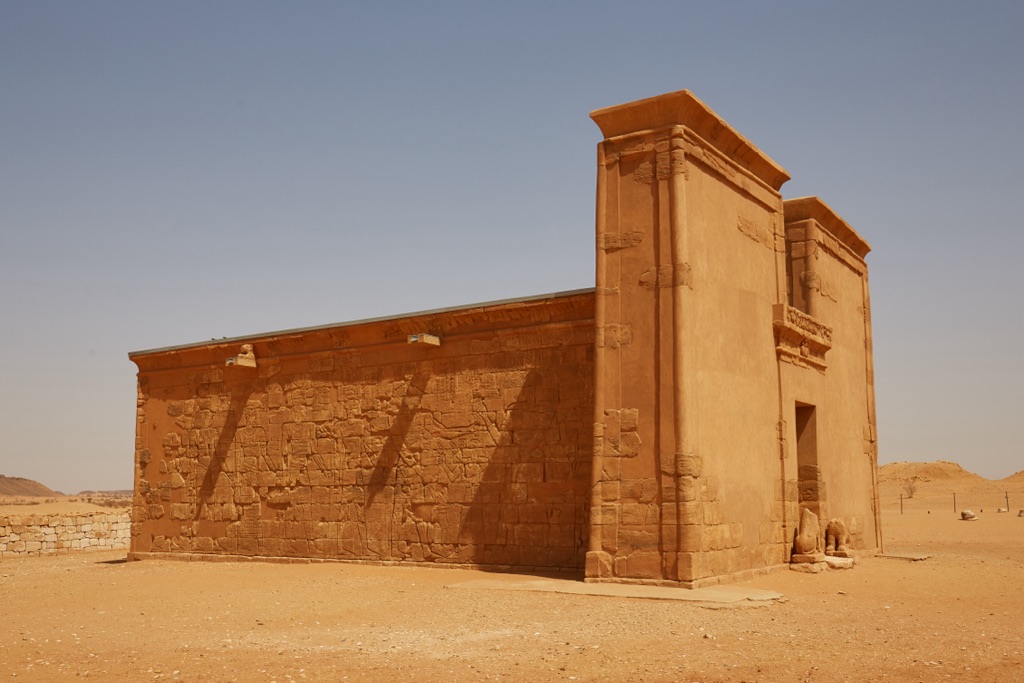Musawwarat es-Sufra is an archaeological site located in Sudan, known for its vast ruins that date back to the Meroitic period. The site features a large temple complex, which is one of the largest known Meroitic settlements. The name itself translates to “painted” or “depicted,” hinting at the potential presence of murals or art that once adorned the walls. Despite its grandeur, the exact purpose of the complex remains a mystery, with various theories suggesting it served as a pilgrimage center, a royal residence, or a training ground for elephants used in war.
Get your dose of History via Email
Historical Background of Musawwarat es-Sufra
The discovery of Musawwarat es-Sufra dates back to the 19th century. European explorers stumbled upon the ruins, with the first documented visit by Carl Richard Lepsius in 1844. The site’s origins trace back to the Meroitic Kingdom, an ancient Nubian civilization. This kingdom flourished between 300 BCE and 350 CE, leaving behind a rich cultural heritage.
Archaeologists believe the Meroites built Musawwarat es-Sufra. The complex showcases the architectural prowess of this civilization. Over time, different groups may have inhabited the site. However, there is no concrete evidence of long-term settlement after the Meroitic period.
Musawwarat es-Sufra has not been the scene of any known historically significant events. Yet, its existence is crucial for understanding the Meroitic civilization. The site provides insights into the social, religious, and economic aspects of this ancient culture.
Excavations and research have been ongoing since the early 20th century. These efforts have revealed much about the site’s layout and function. Despite this, many aspects of Musawwarat es-Sufra remain shrouded in mystery.
The site’s remote location and the enigmatic nature of its ruins continue to captivate archaeologists and historians. Its significance lies not just in its past, but also in its potential to unlock secrets of the ancient world.
About Musawwarat es-Sufra
Musawwarat es-Sufra is a testament to the architectural ingenuity of the Meroitic people. The complex includes temples, columns, and intricate carvings. The Great Enclosure is the largest structure on the site, with walls enclosing a vast area.
The builders used sandstone blocks to construct the temples and walls. They employed advanced techniques for their time, creating a lasting monument. The site’s layout suggests a well-planned architectural vision, with a central axis and symmetrical design.
One of the most striking features is the array of elephant carvings. These suggest the importance of elephants in Meroitic culture. The carvings also raise questions about the site’s purpose, possibly linked to these animals.
The ruins also include a series of kiosks and small chapels. These structures add to the complexity of the site. They indicate a mix of religious and secular uses, further complicating our understanding of the site.
Despite the ruinous state of Musawwarat es-Sufra, the remaining structures are a marvel. They offer a glimpse into the grandeur of Meroitic architecture and the sophistication of their builders.
Theories and Interpretations
Musawwarat es-Sufra has been a hotbed of theories and interpretations. Some scholars suggest it was a religious pilgrimage site. The presence of temples and altars supports this theory.
Another theory posits that it was a royal retreat. The grandeur and secluded nature of the complex lend credence to this idea. Yet, there is no definitive evidence to confirm this.
The elephant carvings have led to speculation about the site being an elephant training center. This theory aligns with historical accounts of the Meroitic army using war elephants. However, it remains a theory.
Archaeologists have used various methods to date the site. These include analyzing pottery styles and construction techniques. Radiocarbon dating has also been employed, providing a range of dates within the Meroitic period.
Despite extensive research, Musawwarat es-Sufra keeps some of its secrets hidden. The true purpose of the site is still up for debate, with each theory having its merits and drawbacks.
At a glance
Country: Sudan
Civilization: Kushite Empire
Age: Approximately 2,300 years old (300 BCE to 350 CE)
Conclusion and Sources
The information in this article has been gathered from reputable sources. These include:

